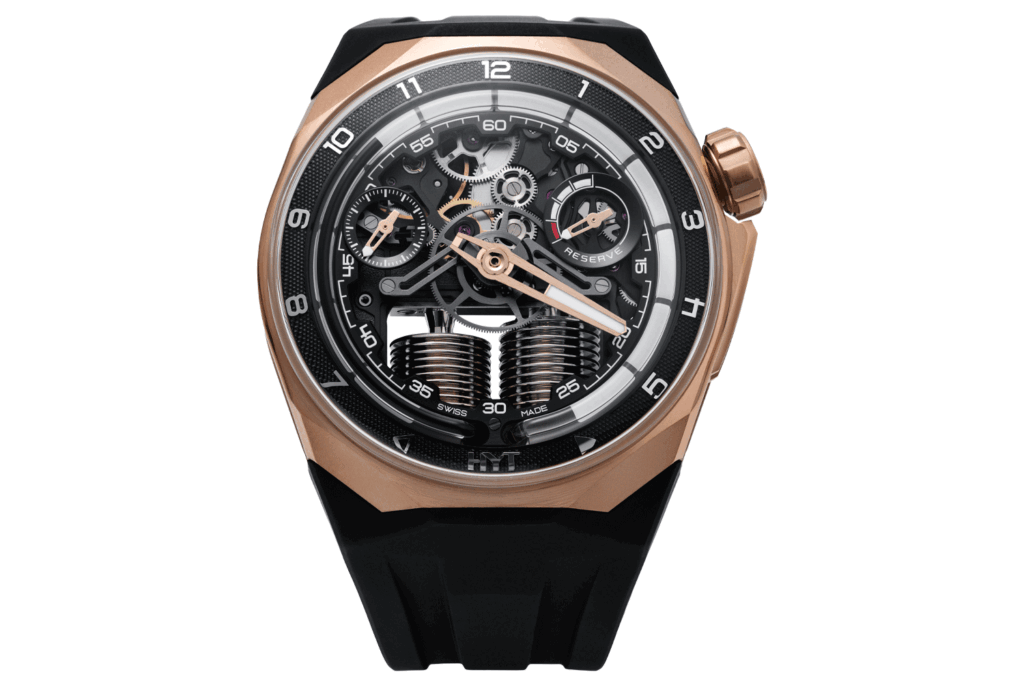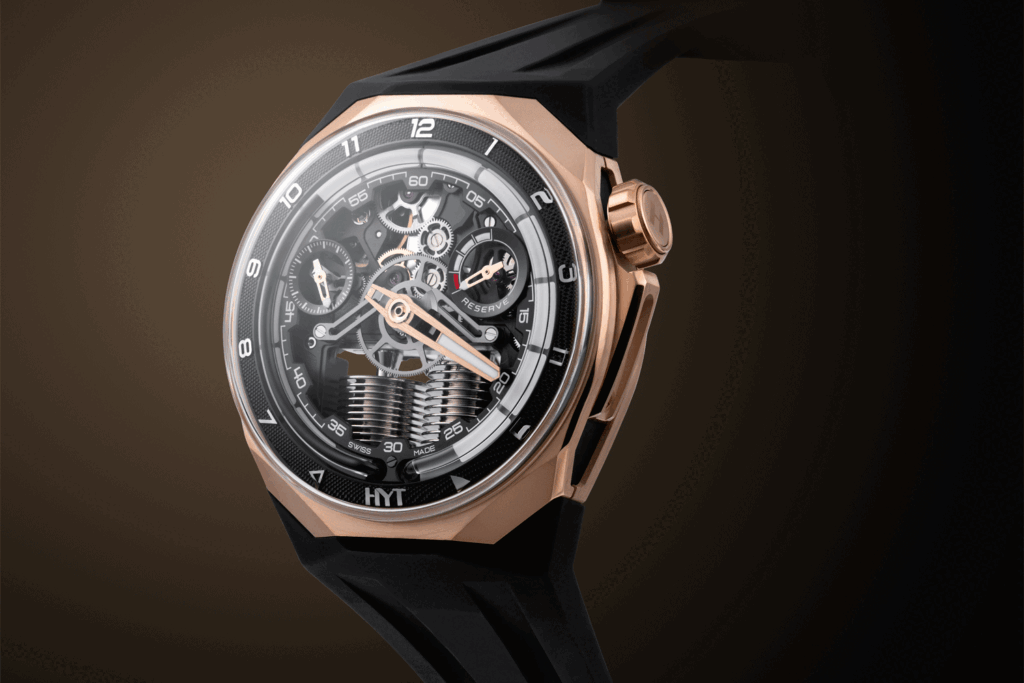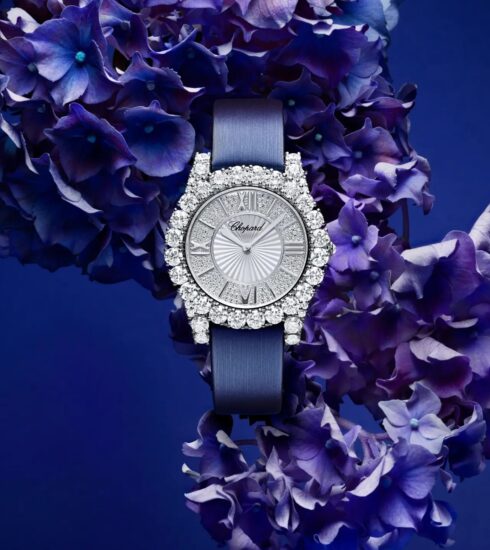Hyt combines the art of Swiss watchmaking, hydromechanics and international culture
Hyt combines the art of Swiss watchmaking, hydromechanics and international culture
The “S1 5N Gold Titanium Limited Edition Fally Ipupa” by Hyt is limited to eight pieces worldwide and bears the signature of the Congolese singer, dancer and music producer on the case back.
The striking timepiece features the signature design elements of the "S1" series, including the skeletonized dial, ergonomically redesigned case, and interchangeable strap system. This model also heralds a new sports watch collection from Hyt.

"Fally embodies movement, culture, and fearless self-expression—all values we embrace at Hyt," explains Hyt CEO Vahe Vartzbed. "This watch is more than just a timepiece—it's a symbol of how precision and passion blend together in perfect form."

Fally Ipupa, whose career has redefined African music worldwide, is also enthusiastic about the collaboration: "This project has allowed me to experience time in a new way. Hyt's innovative vision fits perfectly with the rhythm of my creative journey. Together we have created something timeless."
This timeless piece is unmistakably presented in an ergonomically designed 45-millimeter case made of 5N rose gold and black DLC-coated titanium. The striking, angular design underscores its confident appearance.
“S1 5N Gold Titanium Limited Edition Fally Ipupa”
The angularly positioned strap ensures a comfortable fit despite its substantial size. Two fastening options are included: a black Velcro strap with a folding clasp and a black rubber strap with a pin buckle. Changing the strap is done in just a few seconds thanks to the integrated quick-change system.

At the center of the skeletonized dial is the hydromechanical caliber 501-CM, openly displayed. With its two small bellows and sandblasted and satin-finished movement components, the movement still appears as unconventional 13 years after the debut of the first hydromechanical Hyt watch in 2012.
Classic features include the refinement of all individual components to haute horlogerie standards, as well as the manual winding of the mainspring via the 5N gold crown positioned between 2 and 10 o'clock. Winding activates both the central minute hand and the small seconds hand, the latter on a separate counter between 9 and 10 o'clock. The small power reserve indicator hand—positioned in line with the crown—also begins to move.

For easy readability even in the dark, the satin-finished hands made of PVD-coated 5N gold are fitted with white SLN luminous material.
Hydromechanical precision from Hyt
The mechanical movement also transfers its power to the retrograde liquid hour display. Although the construction, with 352 individual parts, a frequency of 28,000 vibrations per hour, and a power reserve of 72 hours, is a fully developed caliber, it also appears innovative and futuristic.
For example, the two prominently placed miniature bellows are made of an alloy with walls only a quarter of a human hair thick—yet 10,000 times more waterproof than conventional diving watches. The unique feature of these bellows is the ultra-thin capillary glass channel that connects them. In the "S1 5N Gold Titanium Limited Edition Fally Ipupa," this channel is filled with a black liquid that displays the hours.

The design principles of this fluidic time-display mechanism are inspired by the functioning of the water clocks (clepsydra) used by the pharaohs to measure time. Hyt's timepieces are based on two reservoirs of highly flexible alloy bellows, positioned at 6 o'clock, each connected to one end of a glass capillary.
One reservoir contains a colored liquid, the other a transparent one. Driven by the clockwork mechanism, the first reservoir compresses while the other expands, moving the liquids within the capillary. The two liquids are immiscible, with molecular repulsion separating them and creating a visible dividing line—the meniscus.
As the hour passes, the liquid moves—and with it the dividing line that graphically displays the time along the edge of the dial. Over the course of the day, the capillary tube fills with the colored liquid over twelve hours. When the liquid reaches the end of the capillary, it returns to its original position in a retrograde movement, thus beginning a new twelve-hour cycle. Protected by seven patents, this invention was awarded the Innovation Prize at the Grand Prix d'Horlogerie de Genève in 2012.






